Sewing
box Index

History of sewing
boxes
Request current
list of available sewing boxes
| |
Antique Venetian box decorated with Lacca Povera
depicting
Chinoiserie fantasies Circa 1730.
Please click on images to enlarge | slide show | thumbnail index |
Reference: Sb112
Description: Rare important early 18th Century Venetian box
with fielded panels decorated with lacca povera depicting
Chinoiserie fantasies, framed with gilt-wood; the inside of the
box has a
later (early 19th century English) tray, covered in green silk
fitted for sewing.
Origin: Italy Venice.
Circa: 1730
Materials: Wood,
decorated with lacca povera and gilt gesso.
Size: 31.8cm wide by 21.5cm by 12.5cm:
12.5 inches wide
by 8.5 inches by 4.9 inches.
Condition: Good
overall, some losses, but un-restored and retaining its integrity. The
original varnish has a fine crazing consistent with age. Please see
images for a full record.

Detail: A young Oriental boy in dress that is more
European than Chinese with the symbols of a scholar prince.
|
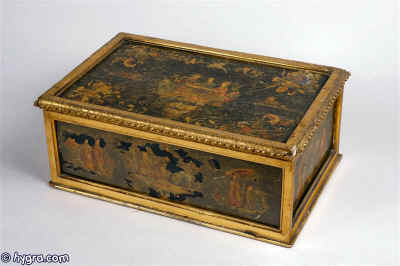
Lacca povera (also termed arte povera and lacca
contrafatta) was
developed as a means of imitating the appearance of costly,
scarce, and fashionable high value lacquer being imported into Europe
from the far East. It is now rarer and possibly more valued in the
west than the material it imitated.
It is not surprising that it was in Venice that one of the first
lacquer substitutes was developed. Venice was an important port through
which the luxury products of the Silk Route reached Europe.
In Lacca povera motifs and scenes were pasted on the primed
wood using flower paste. They were then decorated with color and finally
varnished.
|
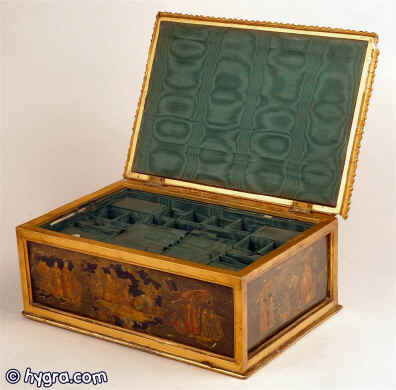
Inside the box has
a
later high quality (early 19th century English) tray, covered in green silk
fitted for sewing.
|
In the earliest work the motifs are chinoiserie as here but these
were quickly replaced by European themes.
It is believed that the varnish used by the Venetians was made with
sandarac. Both spirit and oil versions existed.
|
Please click on images to enlarge | slide show | thumbnail index |
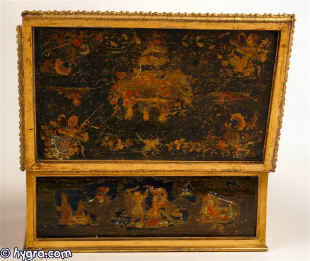
|
There is still a lack of research on the detailed methods of early
craftsmen and artists and much of the evidential record is often
destroyed by restoration.
Sandarac oil varnish was the
so-called “vernis liquida” of the Italian Renaissance-era tempera
and oil painting and was complicated to make.
Gum Sandarac is brittle resin obtained from the African
sandarac tree, Tetraclinis articulata, in the form of yellowish, faintly
aromatic, opaque tears and broken cylindrical pieces. It is soluble in
alcohol. It is used in the manufacture of spirit varnishes, and, when
dissolved in oil, to make cooked varnishes. It is also used in powdered
form to clean vellum and to prepare it for writing purposes. Its most
outstanding property is its hardness. It is sometimes called
"gum juniper."
|
The printer Remondini from Bassano del Grappa was the principal
supplier of prints to the workshops. These engravings were taken form
the most popular catalogues, so certain decorations were inspired by the
work of contemporary artists such as Ricci, Zaiss, Zucarelli, Anigoni,
Waquer and Dall'Acqua.
See:
|
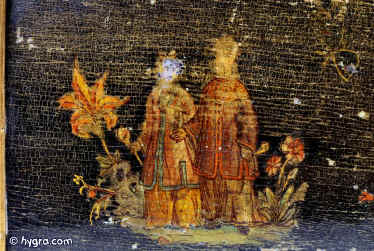
|
Please click on images to enlarge | slide show | thumbnail index |
Please click on images to enlarge | slide show | thumbnail index |
Please click on images to enlarge | slide show | thumbnail index |
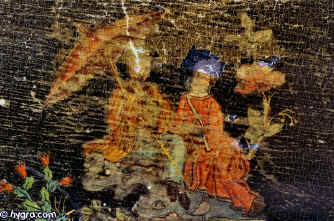
|
A
|
Please click on images to enlarge | slide show | thumbnail index |
Please click on images to enlarge | slide show | thumbnail index |
Please click on images to enlarge | slide show | thumbnail index |
Please click on images to enlarge | slide show | thumbnail index |

|
The inside of the
box has a
later (early 19th century English) tray, covered in green silk
fitted for sewing.
|
Please click on images to enlarge | slide show | thumbnail index |
Please click on images to enlarge | slide show | thumbnail index |
Please click on images to enlarge | slide show | thumbnail index |
The box has gilded gilded gesso framing.
|
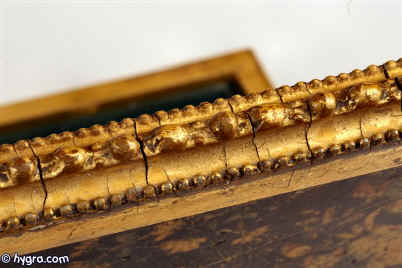
|
Please click on images to enlarge | slide show | thumbnail index |
All text and images and linked images are ©
1999-2007 Antigone Clarke and Joseph O'Kelly. If you require any further
information on permitted use, or a licence to republish any material, email us
at copyright@hygra.com
|
